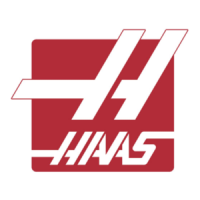co n t r o l di S P l a y a n d Mo d e S
The control display is organized into panes that vary depending on the current
control mode, and on what display keys are used. The following illustration
shows the basic display layout:
.
Interaction with data can be carried out only within the currently active pane.
Only one pane is active at any given time, and it is indicated with a white back-
ground. For example, to work with the Tool Offsets table, rst make the table
active by pressing the Offset key until it displays with a white background. Then
make changes to the data. Changing the active pane within a control mode is
typically done with the display keys.
Control functions are organized into three modes: Setup, Edit, and Operation.
Each mode provides all of the necessary information to perform tasks that fall
under the mode, organized to t in one screen. For example, Setup mode dis-
plays both the work and tool offset tables, and position information. Edit mode
provides two program editing panes and access to the VQCP and IPS/WIPS
systems (if installed).
Access modes using the mode keys as follows:
Setup: ZERO RET, HAND JOG keys. Provides all control features for machine
setup.
Edit: EDIT, MDI/DNC, LIST PROG keys. Provides all program editing, man-
agement, and transfer functions.

